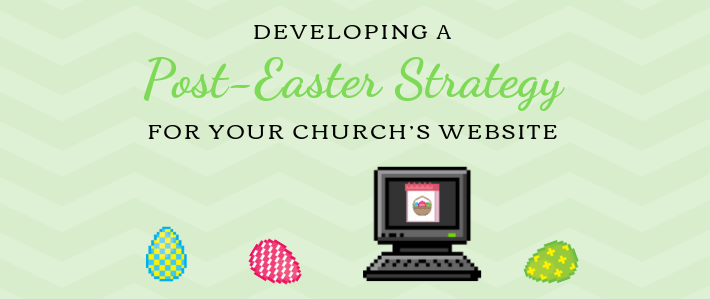
Spring is in the air, and the church calendar is telling us Easter is almost here. But you’re not worried because you have done all that can possibly be done. The bulletin covers are ready. The Easter egg hunt went off without a hitch. Information about Holy Week has been shared. This year you even coordinated a Lenten video devotional blog for social media followers. You have a strategy for greeters when visitors arrive. Little cards are out to collect visitors’ information. Postcards are ready to be sent out as follow-up. The elders are lined up to make those follow-up calls. And let’s face it—the website was off the charts with all the awesome graphics. YOU KNOCKED IT OUT OF THE PARK! Now it’s time to sit back, pat the team on the back, and watch the strategy unfold. Or is it?
The Most Important Message
If you didn’t get to all the items on your Easter to-do list, that’s ok. As we all know, what really matters is the message that is shared and the relationships that are formed through people’s first visits. There’s a nice in-between of not overdoing it to scare first-time visitors, but being welcoming and having a Gospel message prepared from the pastor that will stick with people through the whole year.
This type of message and relationship building is what we all strive for, and it is what sets each church apart. No matter how much preparation and communication we do, at the end of the day, the message and relationship are what help people truly know the love of their Savior.
But once people leave the church building on Easter morning, how are we, the church, going to keep that fire for the Gospel burning in their hearts? How are we going to get those individuals to walk back through our doors to hear the Gospel again and continue in fellowship with other believers?
Where to Communicate That Message
Yes, there are many traditional ways to try to stay connected with these Easter visitors, like postcards and telephone calls. Those are all great techniques, but in this technological age, how can we leverage something we have complete control over? How can we leverage our website? We know visitors are attentive to it because they chose to search or come to the website.
How can we as communicators continue the message of the resurrection beyond Easter morning?
The church website is a powerful tool, and through some strategic thinking, you can use yours to keep the conversation going with visitors and truly impact them even after they leave the building.
Ideas for Your Church’s Website
Here are a few ideas for your church’s website, but be creative and do what fits your church best!
Homepage: That warm, fuzzy feeling and who your church is should be conveyed through your homepage. Additionally, the homepage should be concise and allow visitors to easily navigate where they want to find out more or take those next steps.
Reason to Return: If you will hand out materials on Easter morning or make announcements during the service, make sure those things will be included on the church website. Maybe the next sermon series will be announced. Or maybe the next big “holiday” will be talked about—maybe someone will announce the plan to make the women in attendance feel extra special on Mother’s Day.
Emphasize One Thing: A post-Easter devotional is a great way to help people be in God’s Word each day. Make sure to highlight the devotional on the website! Another idea is to encourage people to sign up to receive a daily Bible verse each day via email or text. These verses could go along with the Sunday-morning readings. Whatever this “big thing” is, don’t make it hard to find on the website. Place it front and center. The nice thing about updates like these is they can be set up ahead of time, so they’re ready to go in advance.
Put a Face on It: Let your website have a face—a personality—and share the stories of the people in the building. Because that is what the Church is, right? People! Maybe make several short videos, thirty seconds to a minute in length, of people talking about what Easter means to them. Unveil one video per week for a designated amount of time—maybe until Pentecost.
Through all this, we must remember that Easter is about the resurrection of our Savior, and our ultimate goal is to connect what the cross means to each person who lands on the church website. Don’t overthink it. Be real. Share the love. And capture that message from Easter morning!
Subscribe to the blog to receive notifications about more content like this.






















